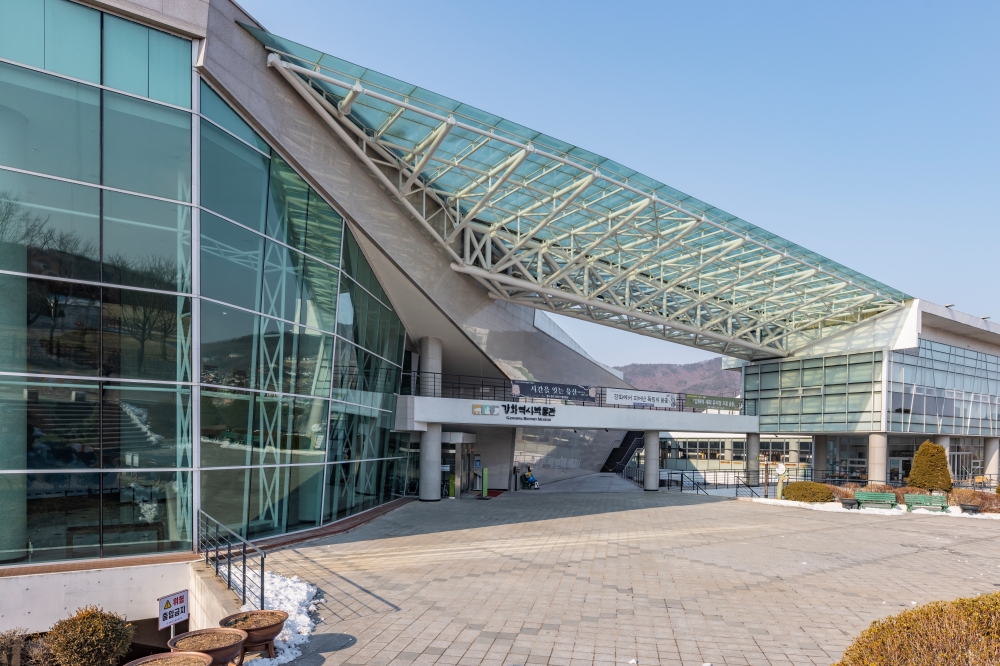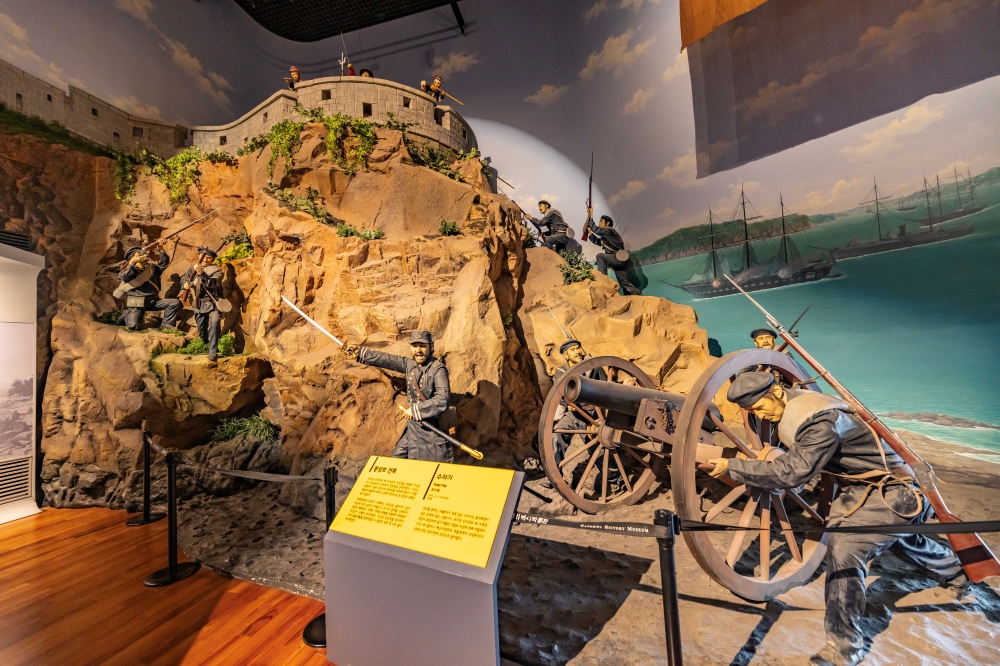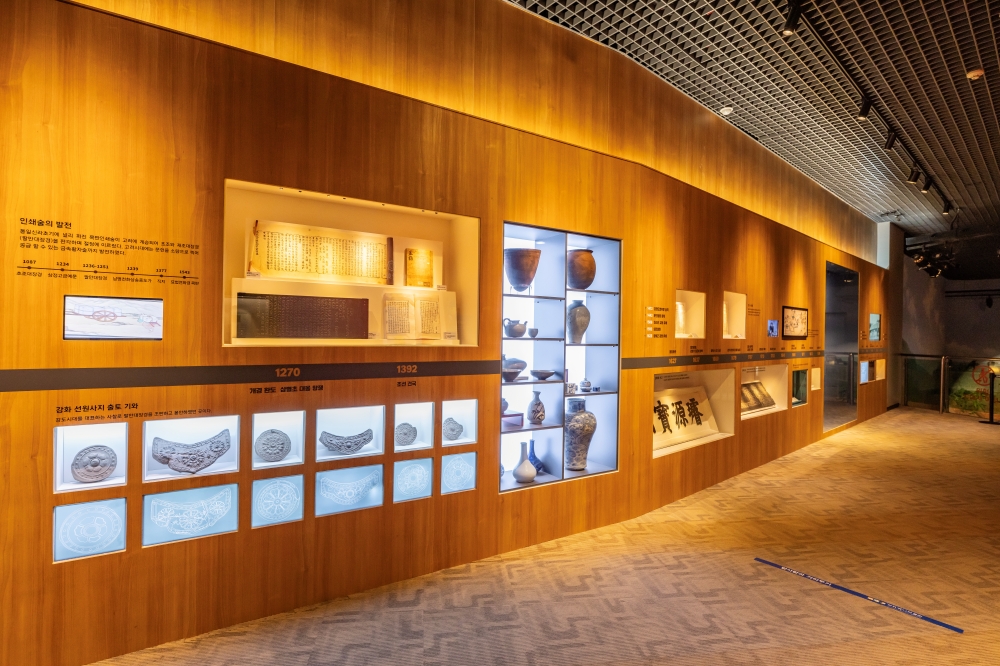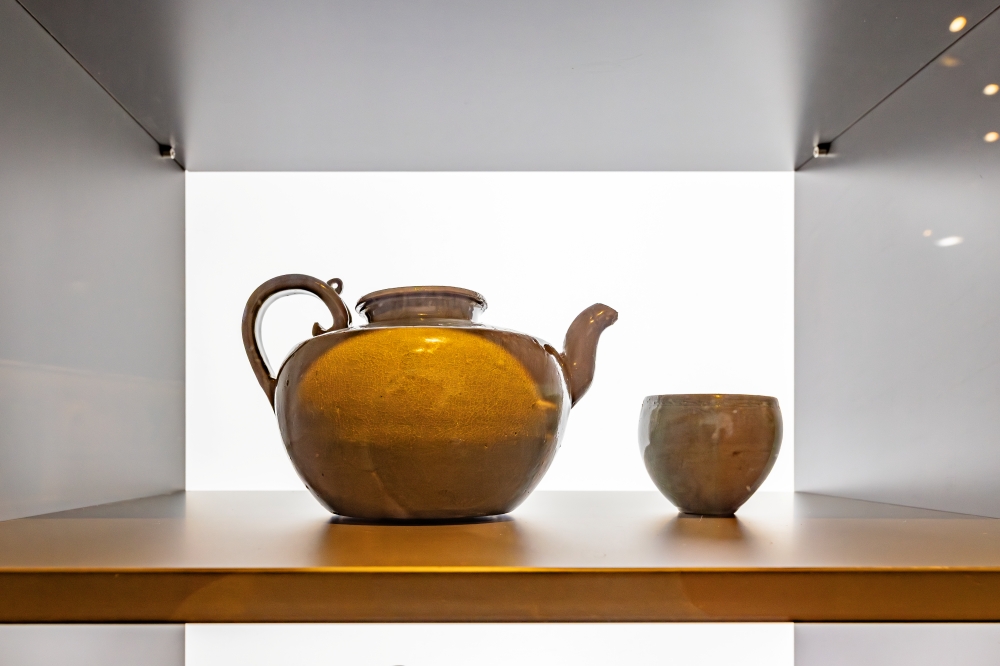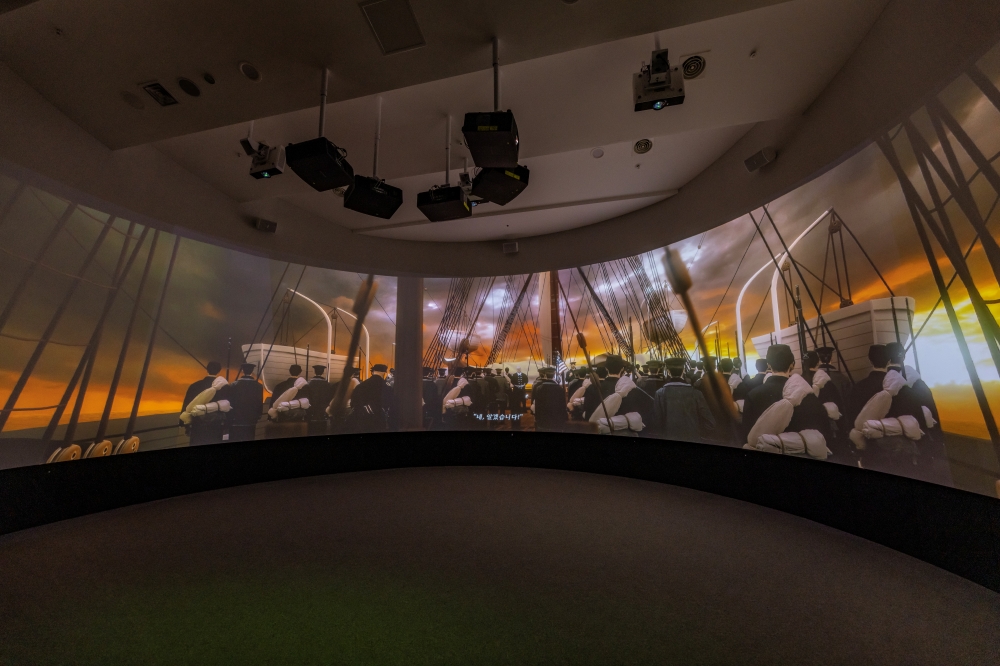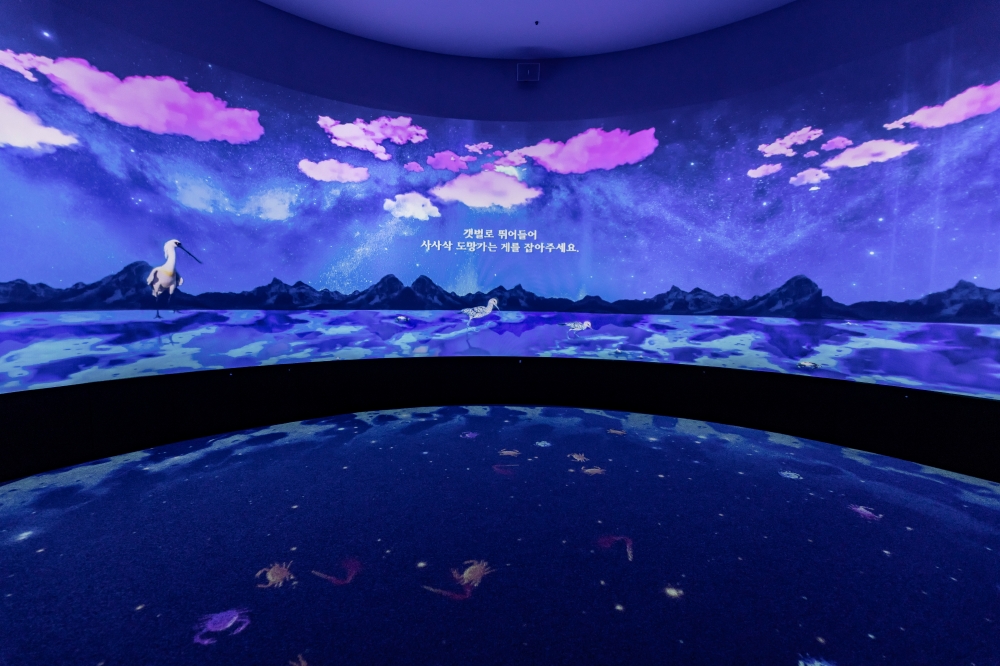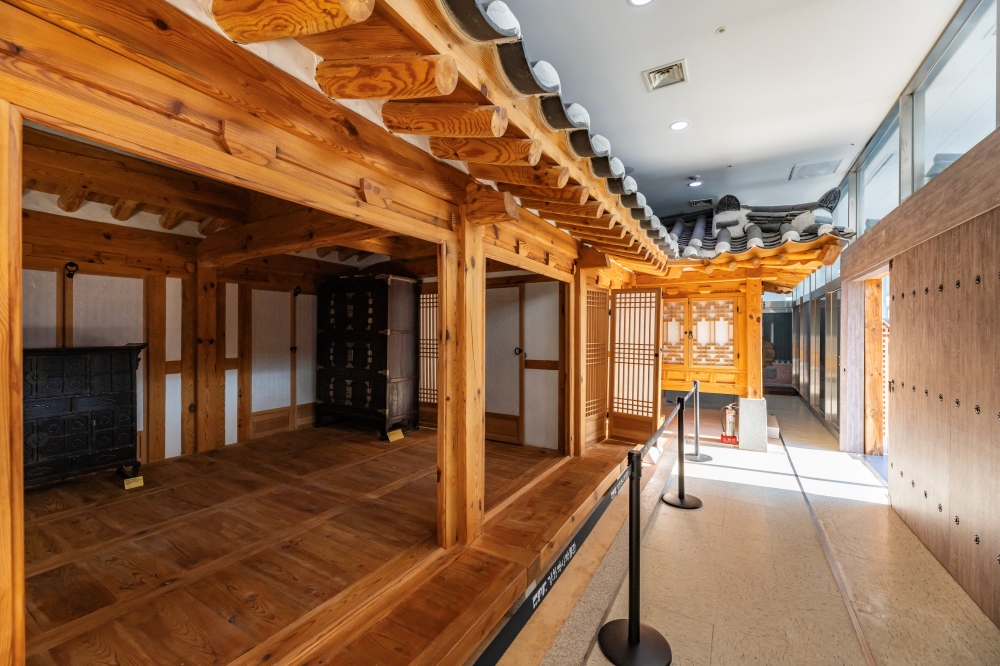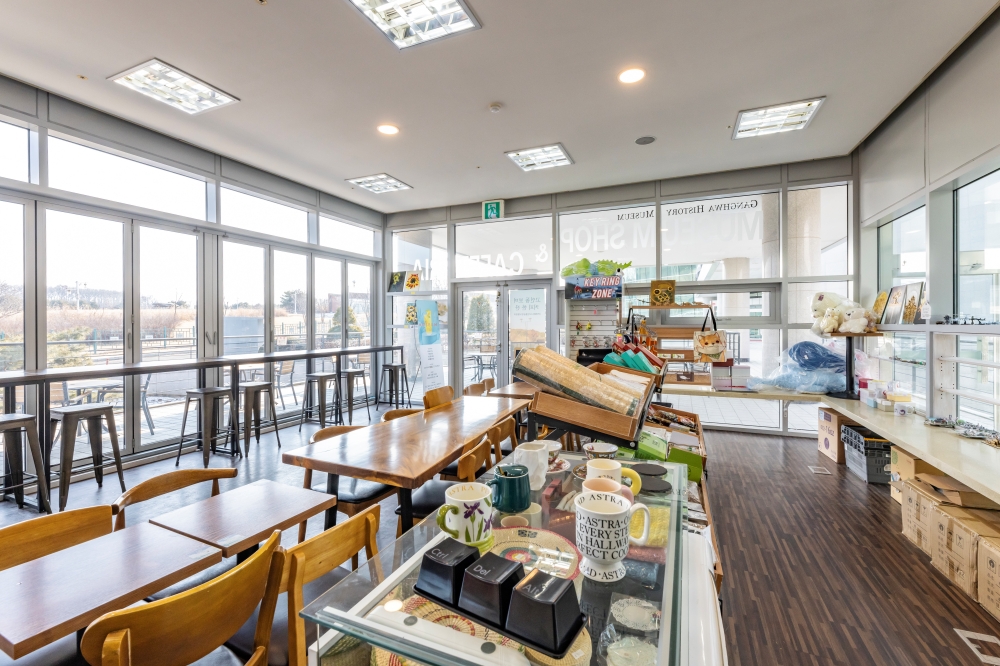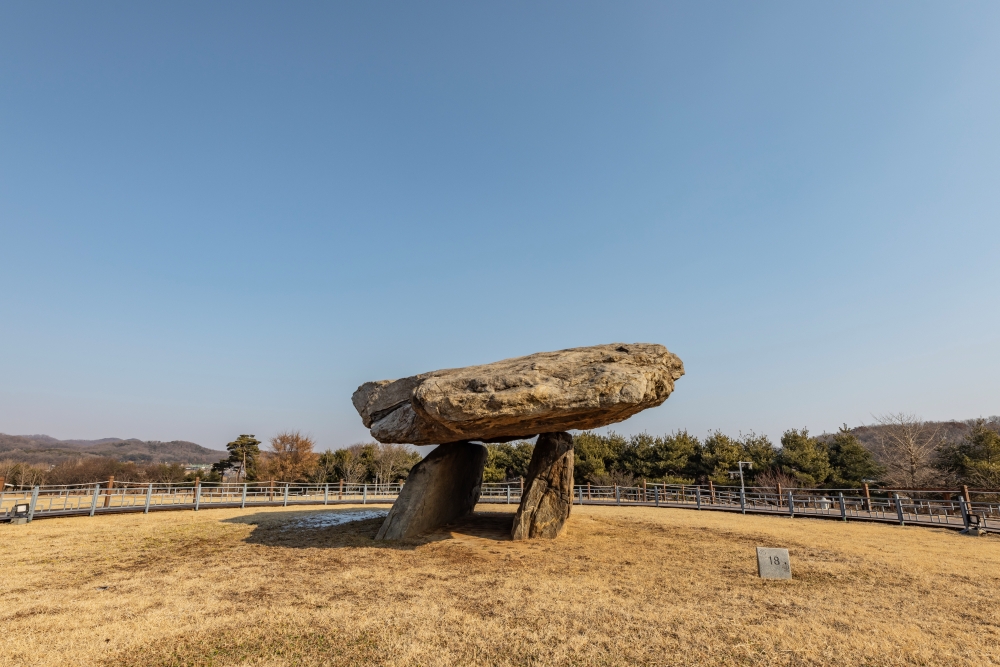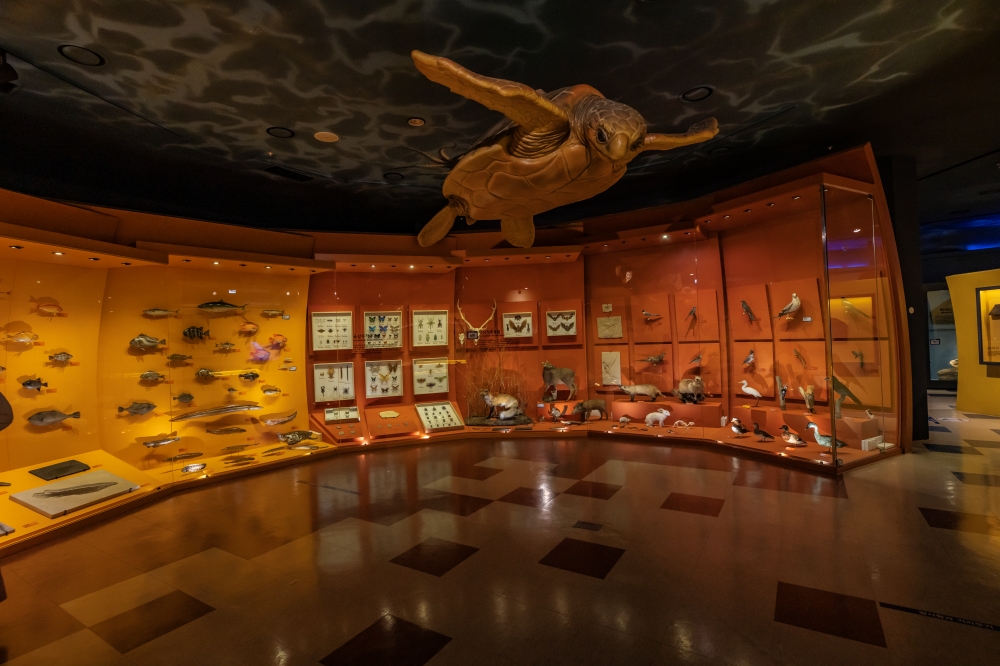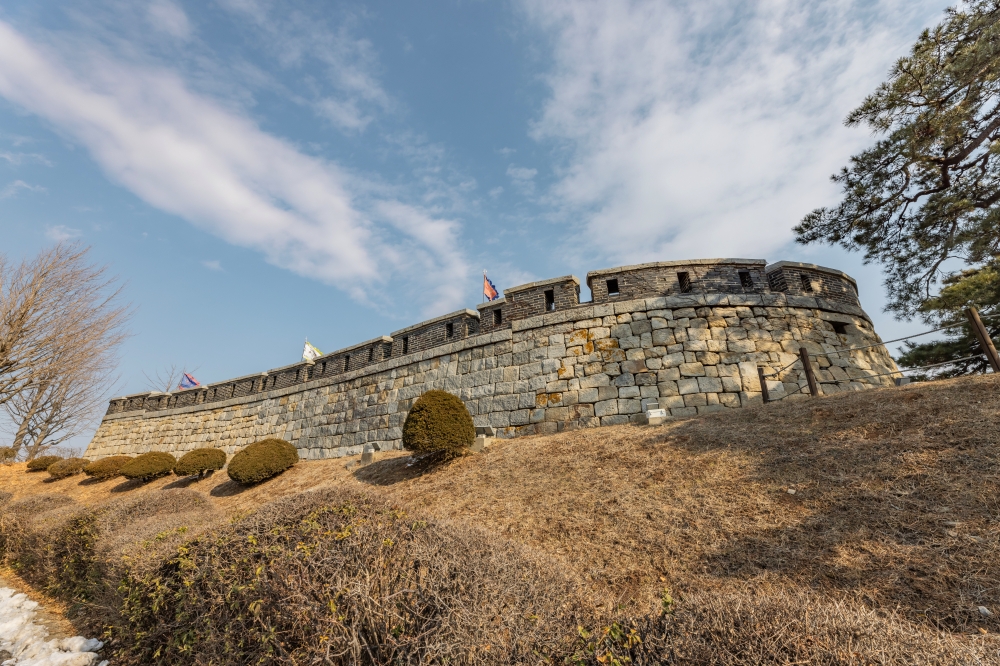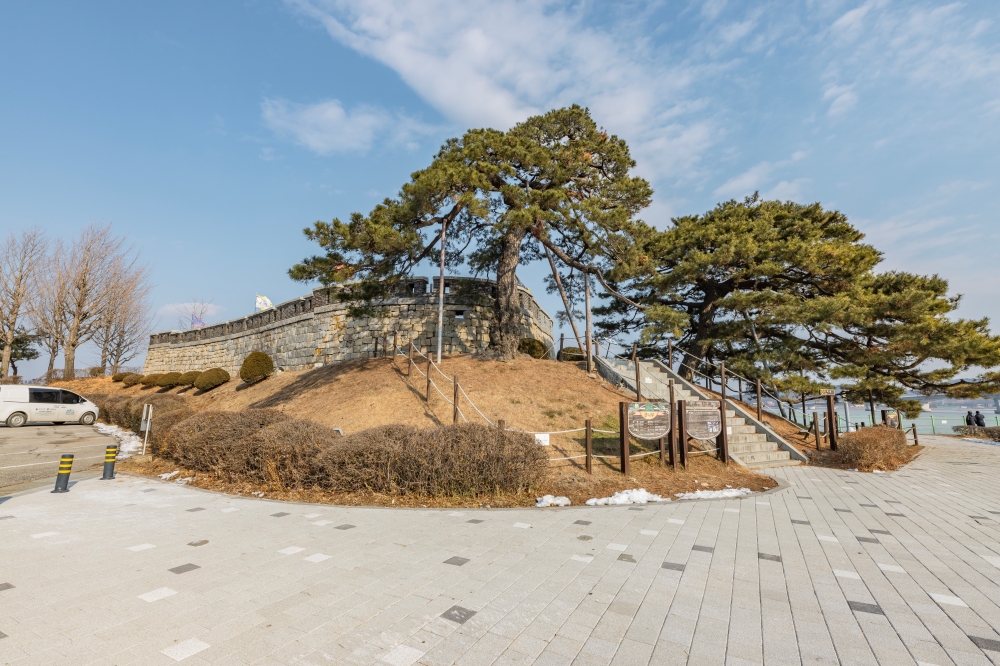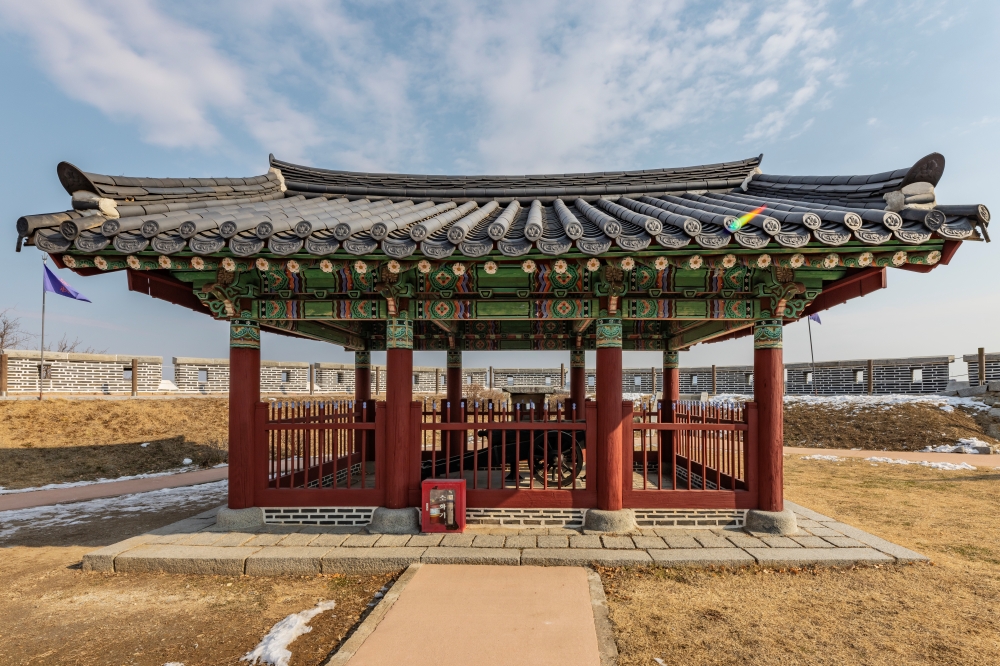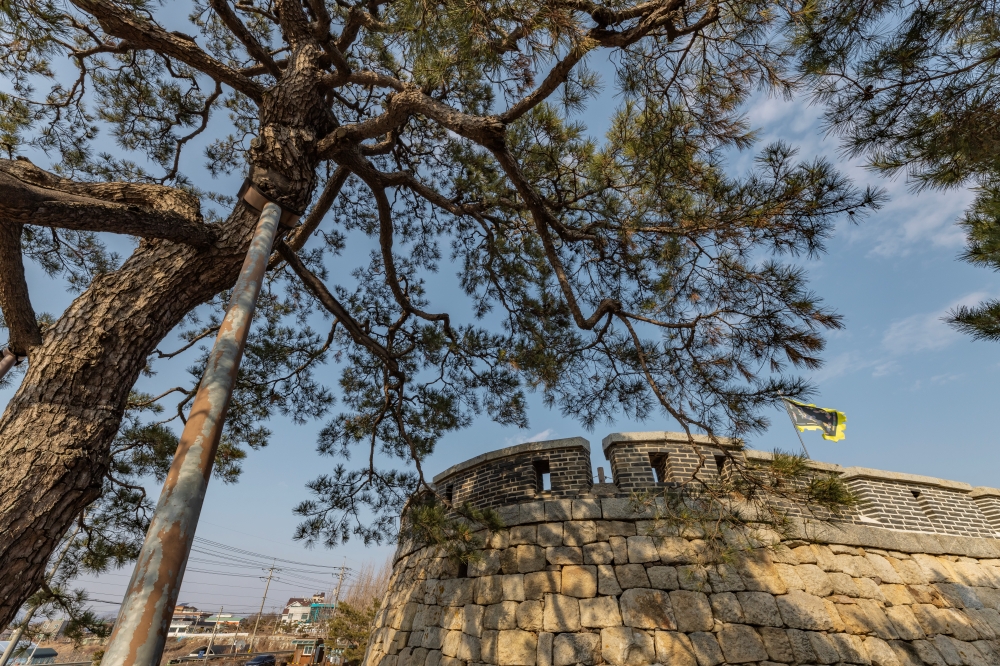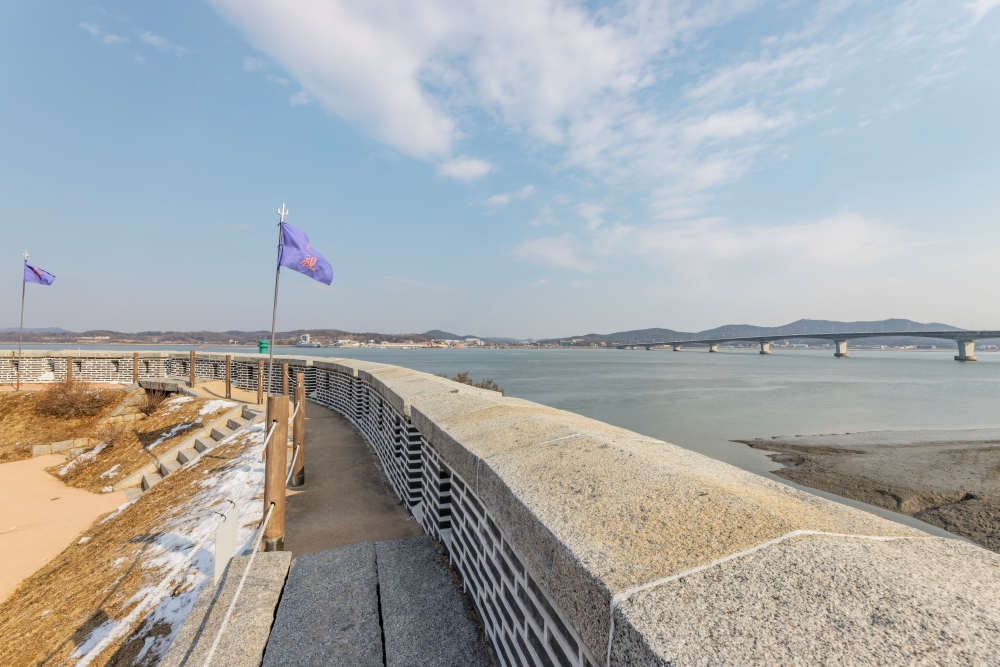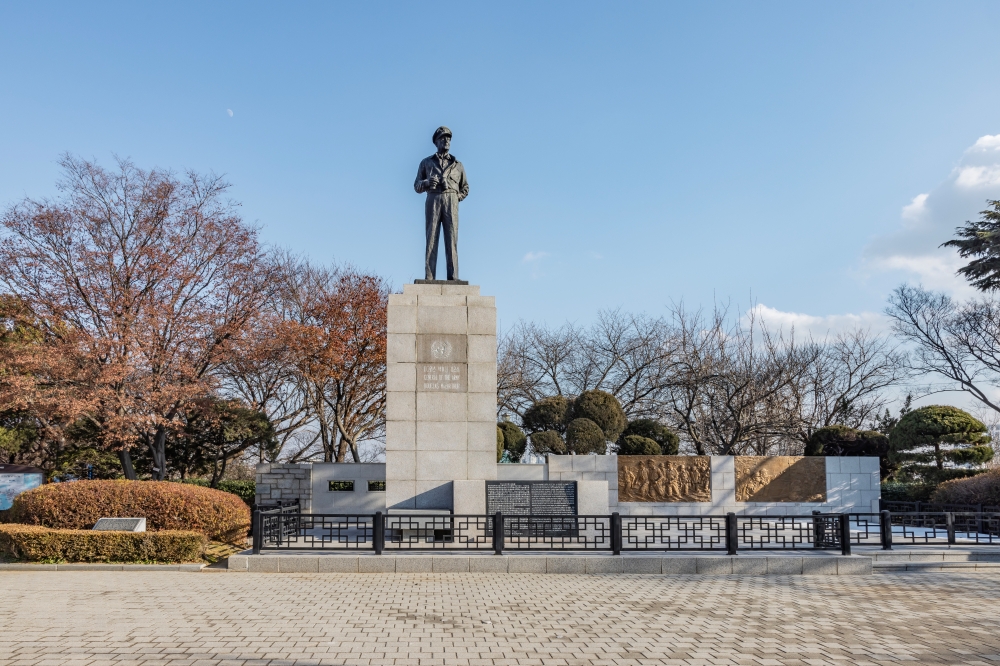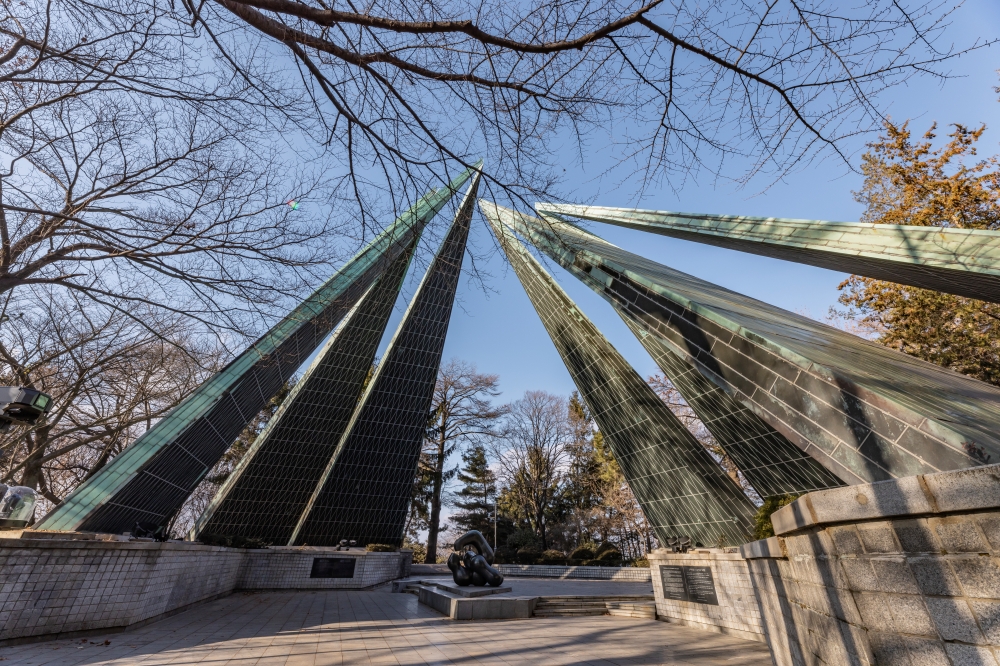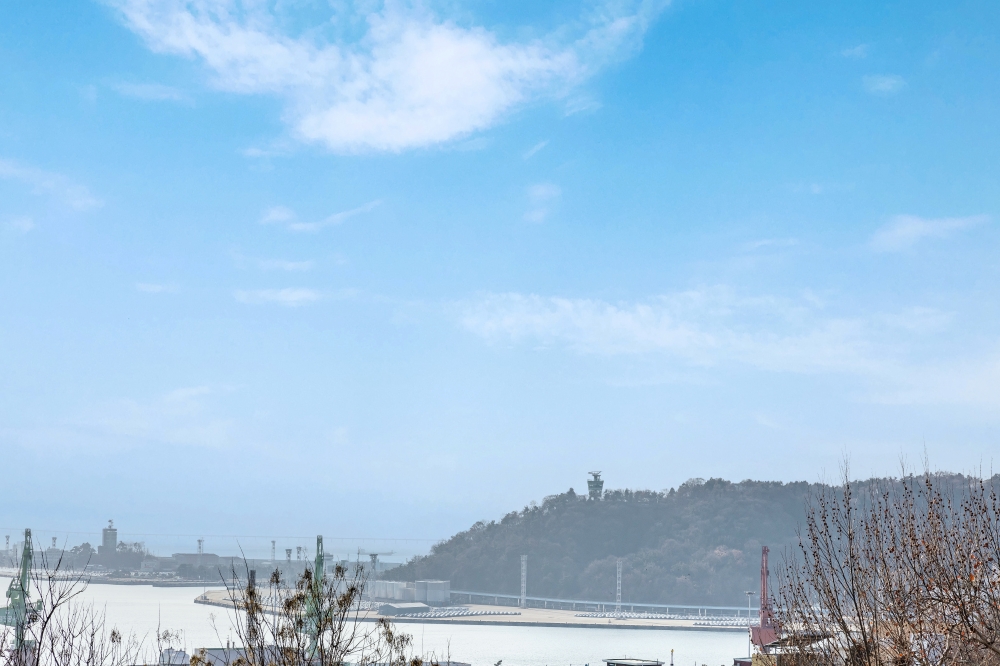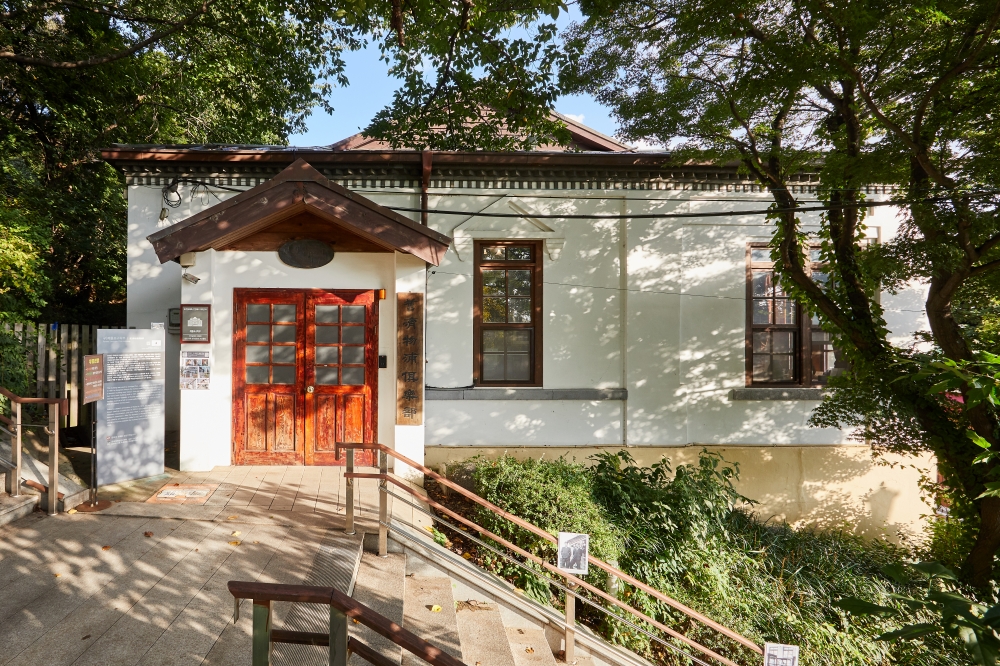From historic sites that showcase the wisdom of our ancestors to traditional markets filled with local delicacies prepared by friendly merchants and hands-on cultural experiences perfect for creating cherished family memories, there’s something for everyone to enjoy!
Beyond Incheon’s historical sites, the area boasts various attractions, including filming locations for popular TV dramas and scenic photo spots.
Songdo Hanok Village: A Hidden Gem in the Middle of Dazzling Cityscape
Nestled within the picturesque Songdo Central Park, Songdo Hanok Village is a delightful spot to discover while taking a stroll.
The striking contrast between modern skyscrapers and traditional hanok architecture creates a unique charm, while the hanok buildings, arranged around a central courtyard, offer a cozy and inviting atmosphere.
The village is home to a variety of restaurants and cafés.
Notable establishments include Gyeongbokgung, an upscale restaurant specializing in charcoal-grilled meats paired with traditional Korean dishes,
and Hanyang, a specialty restaurant known for its Seoul-style Korean beef bulgogi.
At Hollys Coffee, visitors can savor seasonal strawberry treats like fresh strawberry lattes and juices while enjoying panoramic views of Central Park through large glass windows.
Right next to Songdo Hanok Village stands the five-star hanok hotel, Gyeongwonjae Ambassador Incheon. Built by master artisans,
Gyeongwonjae offers an immersive experience of hanok charm.
Renowned experts, including Master Carpenter Choi Ki-young—a National Intangible Cultural Heritage holder who contributed to the restoration of Changgyeonggung Palace,
Buseoksa Temple, and Sudeoksa Temple—along with top specialists in beonwajang* (roof tile crafting) and chiljang* (traditional lacquer work),
collaborated in meticulously recreating the beauty of traditional Korean architecture.
*Beonwajang: A master artisan specializing in connecting and layering roof tiles.
*Chiljang: A craftsman who applies traditional lacquer coatings to wooden crafts.
Thanks to its remarkable spatial aesthetics,
Gyeongwonjae has been featured as a filming location for several popular K-dramas, including Guardian:
The Lonely and Great God, Crash Landing on You, and Reborn Rich. For Hallyu fans,
spending a night here while reminiscing about iconic drama scenes offers a unique and memorable experience.
Guests can also rent hanbok through a paid service to capture stunning photos against the picturesque hanok backdrop.
Central Park, home to Songdo Hanok Village, offers a variety of activities. Visitors can take a leisurely stroll along the waterfront or enjoy a boat ride on the scenic waterways.
The East Boat House, located near the entrance to Parking Lot 1, rents various boats, including the crescent moon boat and the carriage-shaped Cinderella boat.
[Tip!]
- The Incheon Urban History Museum, offering fascinating insights into Incheon’s history, is just a five-minute walk from Songdo Hanok Village, making it a great place to explore together.
- If you’re arriving from Incheon International Airport, you can take limousine bus 6777 and get off at the stop in front of the Incheon Tourist Information Center, from where Songdo Hanok Village is easily accessible.
- Just a five-minute walk from Songdo Hanok Village is the Incheon Tourist Information Center, where foreign language-speaking staff (English, Japanese, and Chinese) are available to assist visitors. A variety of multilingual information materials are also provided. (Closed on Lunar New Year’s Day)
- You can also board a city tour bus at the Incheon Tourist Information Center, which travels to Incheon International Airport, Central Park, and major tourist attractions in Incheon. (Due to internal circumstances, the bus will not operate in January and February but will resume service in March.)
- Address 180 Techno park-ro, Yeonsu-gu, Incheon
- Inquiries +82-32-832-3031 (Incheon Tourist Information Center)
- Opening Hours Vary by facility
Ganghwa History Museum: A Great Place to Explore History and UNESCO-Listed Dolmens
Ganghwado Island, the fourth-largest island in South Korea, is often called an “open-air museum” due to its rich collection of historical relics spanning from prehistoric times to the modern era.
The Ganghwa History Museum, where you can experience the island’s remarkable history in one place, is a must-visit destination to enrich your trip to Ganghwado Island.
The museum’s two-story exhibition hall showcases the history and culture of Ganghwa, covering prehistoric times, the Goryeo and Joseon dynasties, and the modern era.
The exhibits go beyond written text, featuring artifacts, replicas, dioramas, and videos, offering an engaging and immersive experience, especially for children.
A highlight of the museum is the dome-shaped digital immersive theater, which brings to life the story of the 25th King of Joseon,
Cheoljong, and the Shinmiyangyo*, an armed conflict with a Western power. The interactive exhibit transforms the theater into the tidal flats of Ganghwa,
where both children and adults can enjoy a virtual game of jumping into the tidelands and catching crabs as they scurry away.
*Shinmiyangyo: The 1871 invasion of Ganghwa Island by the United States
The museum also features small but charming attractions, including traditional hanok rooms that recreate Joseon-era homes and a cozy cafeteria where visitors
can relax while overlooking the outdoor Dolmen Park. The museum shop sells local specialties such as hwamunseok (woven mats) and Ganghwa lion’s foot mugwort products.
Adjacent to the museum, you’ll find the Dolmen in Bugeun-ri (Historic Site) and the Ganghwa Natural History Museum.
The Dolmen in Bugeun-ri, a typical burial structure from the Bronze Age, consists of more than 40 dolmens built in the northern style,
where coffins are buried underground and topped with large flat stones resembling a table. The largest dolmen stands up to 2.6 meters high.
Recognized for their exceptional historical value, these dolmens are listed as a UNESCO World Heritage Site.
Visitors can stroll along the trails to observe different types of dolmens before heading to the Ganghwa Natural History Museum, making it a perfect day trip for history and nature lovers alike.
[Tip!]
- Check the operating hours of nearby attractions
Ganghwa Natural History Museum: Tuesday–Sunday 09:00–18:00 / Closed on Mondays and the day of Seollal (Lunar New Year’s Day)
- Foreign language brochures (English, Chinese, and Japanese) are available.
- Address 994-19 Ganghwa-daero, Hajeom-myeon, Ganghwa-gun, Incheon
- Inquiries +82-32-934-7887
- Opening Hours Tuesday-Sunday 09:00–18:00 / Closed on Sundays, January 1st, the day of Seollal (Lunar New Year’s Day), and Chuseok(Korean Thanksgiving Day)
- Websitehttps://www.ganghwa.go.kr/open_content/museum_history/
Chojijin Fort, Ganghwa: A Historic Stronghold Bearing the Scars of War
Ganghwado Island has long served as a major military stronghold, resulting in the construction of numerous defensive structures,
including jin (forts) and dondae (outposts) to guard the borders. Chojijin Fort is one such site,
where fierce battles took place during Shinmiyangyo and the Unyo Incident. The original fort was largely demolished, leaving only traces behind, and in 1973, only Chojidon,
a part of the original structure, was restored.
*Jin: A military camp built at key strategic locations during the Joseon dynasty.
*Dondae: A lookout post positioned at easily monitored spots near borders or coastal areas to detect enemy movements and prepare for attacks.
*Unyo Incident: A military clash during the Joseon dynasty (1875) triggered by an illegal invasion by Japan
Although relatively small in size, Chojijin Fort serves as a powerful reminder of its historical significance.
Inside the walls, visitors can see cannons used in the battles, while outside, pine trees still bear scars from shell fragments.
As an added bonus, the fort offers panoramic views of the West Sea’s tidal flats and the 1.2-kilometer-long Gangwha Chojidaegyo Bridge.
Incheon Jayu Park: A Blend of History and Scenic Beauty
The area around Incheon Open Port is rich in modern architecture and cultural heritage,
making it an excellent place to explore Korea’s modern history.
The district is home to many landmarks that hold the title of “Korea’s first,” including Jayu Park, a Western-style park
featuring landscaped gardens by Western design. Established in 1888—just five years after Incheon opened its port—Jayu Park boasts a history of over 140 years.
As one of Incheon’s most iconic parks, it contains records of key historical events that took place in Incheon and its port. Visitors can find memorials honoring
those who sacrificed their lives during the Korean War, a monument marking the establishment of the Korean Provisional Government, and a memorial commemorating
100 years of diplomatic relations between the United States and South Korea.
Beyond its historical significance, Jayu Park is a beloved spot for relaxation.
It features well-maintained walking paths and offers stunning nighttime views. Located at a high vantage point within the Open Port area,
the park offers breathtaking views of the city skyline and the sea, especially from Seokjeongru Pavilion, which serves as an observation deck.
It is also one of Incheon’s top cherry blossom viewing spots in spring.
Jayu Park is well-known as a filming location for popular K-dramas. Several hit dramas have been shot here,
including Guardian: The Lonely and Great God, Business Proposal, and Moving. One notable filming site is Jemulpo Club,
featured in Guardian, which originally rious uses before being restored to its original appearance in 2007. Today,
it functions as a historical and cultural complex, hosting exhibitions and performances. (Closed during Lunar New Year holidays)
Even if you don’t go inside, you can still snap a photo of Gong Yoo and Lee Dong Wook’s iconic scene with the staircase in the background.
[Tip!]
- Check the operating hours of nearby destinations:
Jemulpo Club: Tuesday–Sunday 09:30–17:30 / Closed on Mondays and Lunar New Year holidays
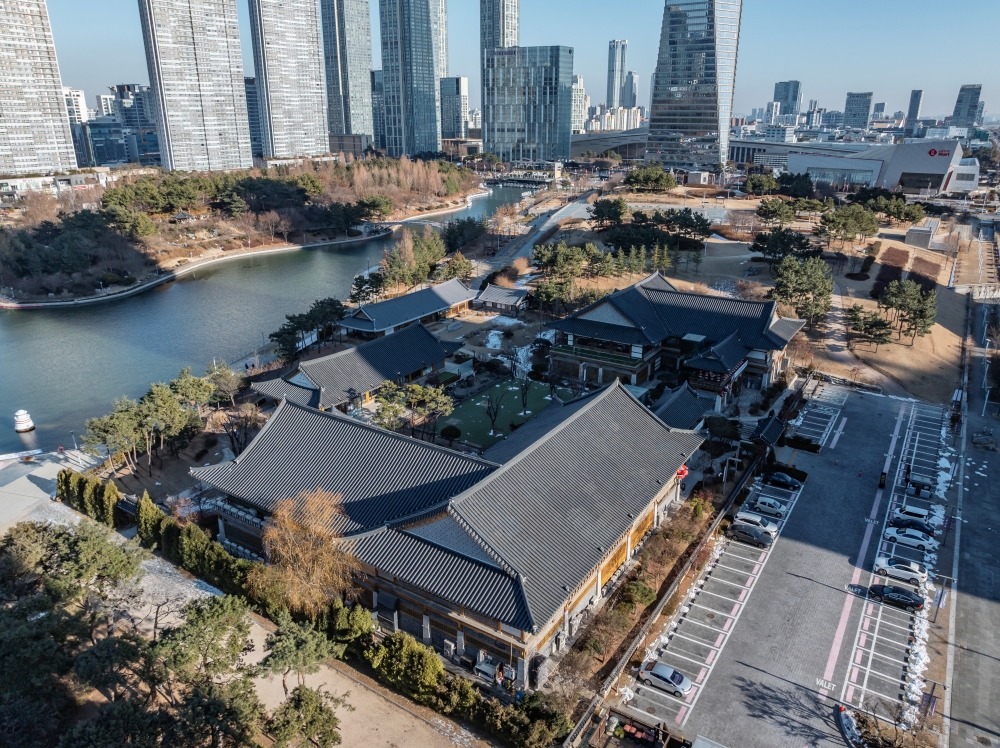
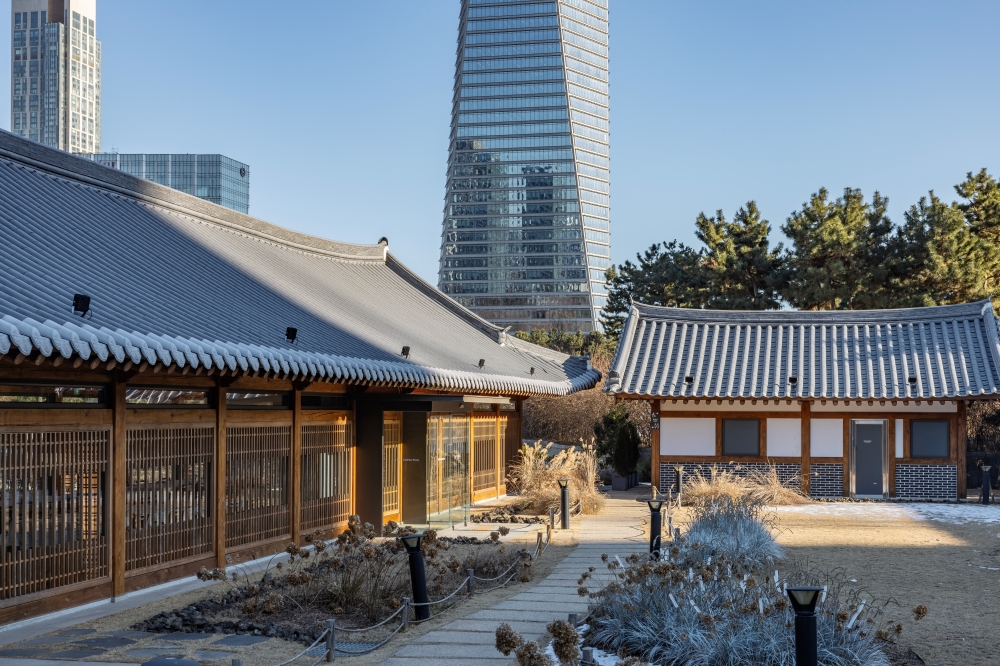
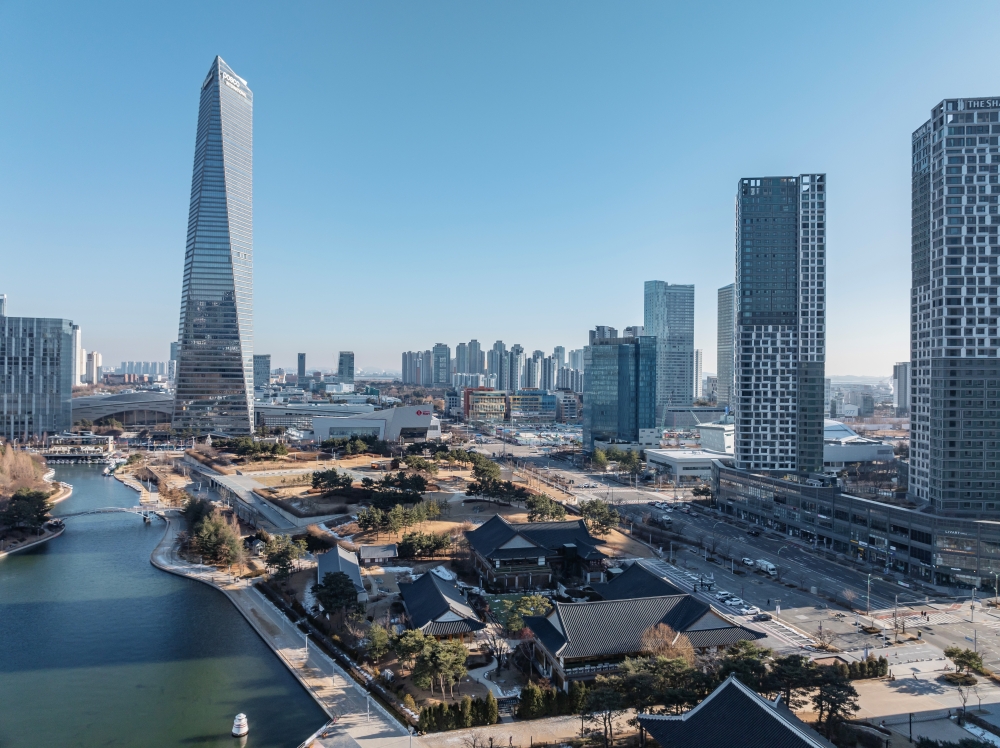
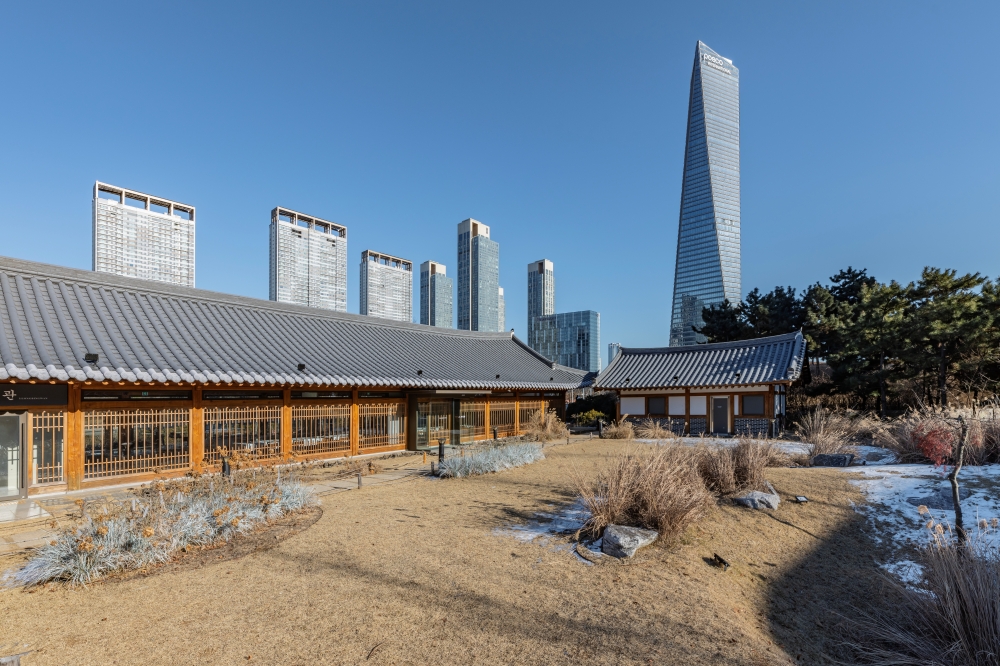
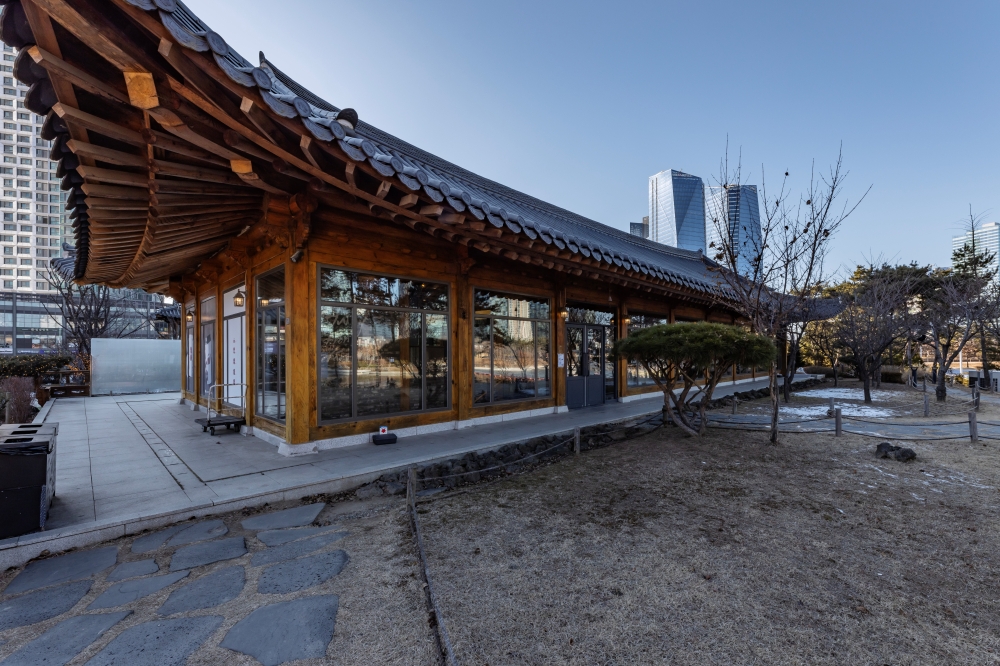
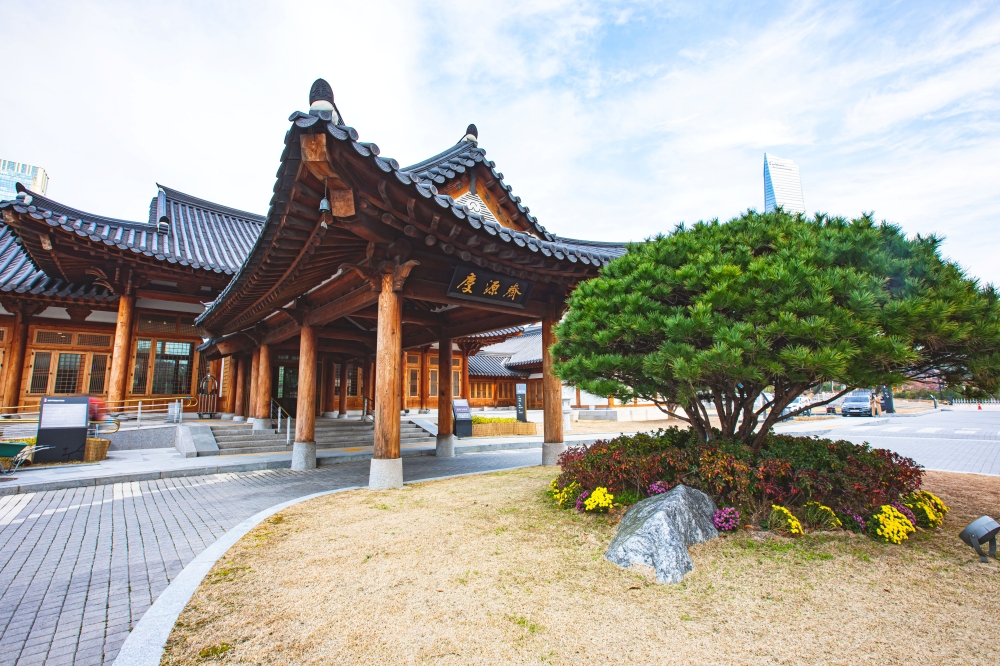

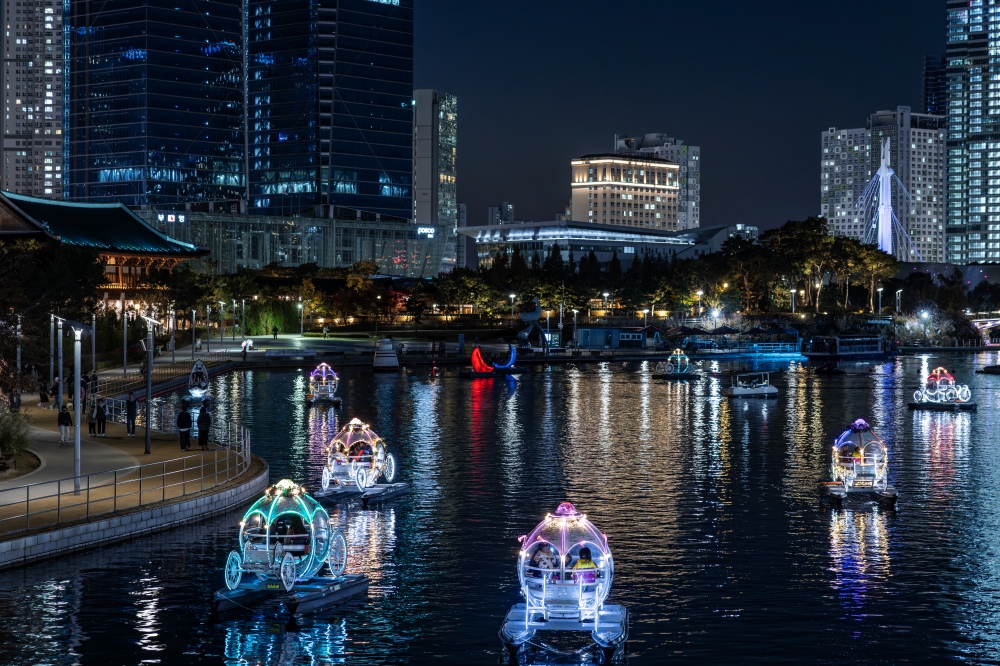



 130
130


